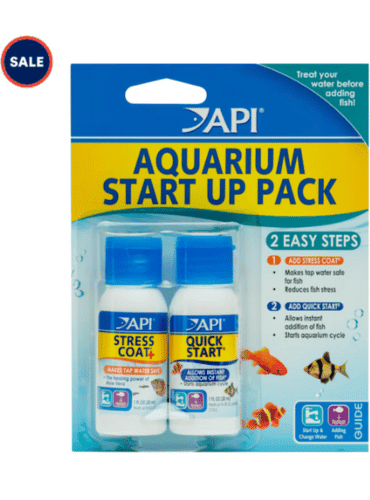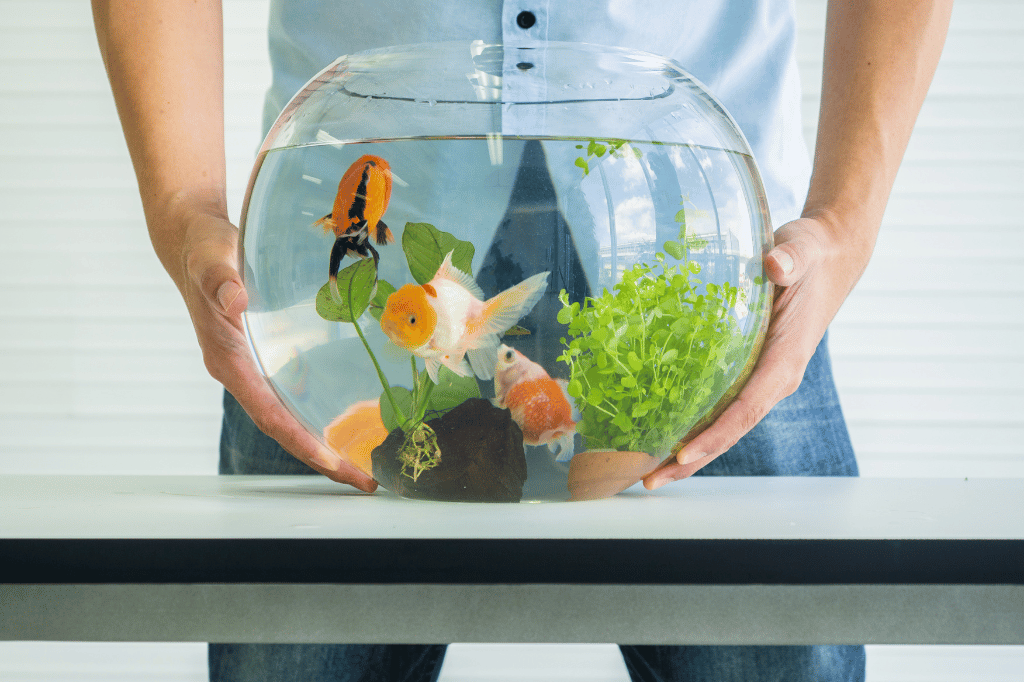Cycling a fish tank is essential for creating a stable and healthy environment for your aquatic life. The cycling process, known as the nitrogen cycle, involves establishing colonies of beneficial bacteria that convert harmful substances like ammonia into less toxic compounds.
This biological foundation is crucial for the well-being of fish and plants in your aquarium. Having a properly cycled tank reduces the risk of fish loss due to toxic water conditions and promotes a balanced ecosystem. As the cycle progresses, testing the water regularly for ammonia, nitrites, and nitrates ensures the environment is safe. The patience invested in cycling your fish tank pays off, paving the way for a thriving underwater habitat.
How to Cycle a Fish Tank: Quick & Easy Steps for Beginners by Insirder Fish
Introduction To Fish Tank Cycling
Importance Of A Balanced Aquatic Environment
Fish need clean and safe water to thrive. A balanced tank mimics the natural habits of fish. This balance maintains clean water and reduces stress on fish.What Is Cycling And Why Do Fish Tanks Need It?
Cycling is getting your tank ready for fish. It’s about growing good bacteria to fight waste. Without cycling, toxic substances can harm your fish.- Adds good bacteria for a clean home.
- Keeps water safe for fish to live in.
- Helps fish stay healthy in their new tank.
The Nitrogen Cycle: A Natural Process
The Nitrogen Cycle plays a vital role in aquarium health. It involves transformation of harmful waste into less harmful substances. Fish produce waste. Plants and beneficial bacteria use this waste to thrive. Understanding Nitrogenous Waste

How to Cycle a Fish Tank: Quick & Easy Steps for Beginners By Insiderfish.com
Understanding Nitrogenous Waste
Fish tanks collect waste from fish, uneaten food, and plant debris. This waste turns into ammonia, which is toxic. The Nitrogen Cycle breaks down this harmful ammonia. It turns it into safer substances for a healthy tank environment.
- Ammonia (NH3): Comes from fish waste and rotting food.
- Nitrite (NO2-): A by-product of ammonia conversion.
- Nitrate (NO3-): Less harmful and used by living plants.
Nitrification: The Cycle’s Bacterial Powerhouse
Nitrification: The Cycle’s Bacterial Powerhouse
Nitrification is the heart of the Nitrogen Cycle. Bacteria called Nitrosomonas convert ammonia into nitrites. Another set, Nitrobacter, change nitrites into nitrates. Plants and water changes remove nitrates. This cycle keeps the tank safe for fish.
| Step | Bacteria | Action |
|---|---|---|
| 1 | Nitrosomonas | Converts ammonia to nitrite |
| 2 | Nitrobacter | Changes nitrite to nitrate |
To start cycling, add fish slowly. Test water regularly. Adjust fish numbers as needed. Keep tank clean. Change water often. This will cultivate good bacteria. A well-cycled tank is a joy for both fish and owners!
Materials You Will Need
Testing Kits To Monitor Water Parameters
Keeping track of water quality is essential. Use testing kits to measure key parameters:- Ammonia levels: Fish produce ammonia. High levels are harmful.
- Nitrite and nitrate levels: These are by-products of the cycle. Monitor them closely.
- pH levels
Supplies For Starting The Cycling Process
Begin cycling by gathering these supplies:- Aquarium: Choose the right size for your space.
- Filter: It must suit your tank size.
- Water conditioner: This removes chlorine from tap water.
- Bacteria starter: Introduces beneficial bacteria.

Setting Up Your Aquarium
Choosing The Right Tank And Equipment
Selecting the right tank is the foundation of a healthy aquarium. Consider these points:- Size – Bigger is often better, providing stable water conditions.
- Shape – Long horizontal tanks are good for fish swimming space.
- Material – Glass resists scratching, but acrylic is lighter.
| Equipment | Function |
|---|---|
| Filter | Keeps water clean |
| Heater | Maintains temperature |
| Lights | Simulates day/night |
Preparation Before Cycling Begins
Set up your tank with these steps:- Wash the aquarium with water, no soap.
- Arrange substrate and decorations.
- Fill with dechlorinated water.
- Install filter and heater.
- Turn on equipment to ensure it’s working.
How to Cycle a Fish Tank: Step-by-step Guide To Fishless Cycling
Adding Ammonia To Start The Cycle
Begin the cycling process by adding ammonia. This step simulates fish waste to kick-start bacteria growth. Use pure ammonia or a commercial ammonium solution. Here’s how to do it:- Measure 5 ppm (parts per million) of ammonia.
- Add it to the tank.
- Ensure even distribution across the water.
Monitoring And Adjusting Ammonia Levels
Keep ammonia levels consistent for successful cycling. Test the water every other day. Use a quality aquarium test kit.| Ammonia Level | Action Required |
|---|---|
| Above 5 ppm | Change some water to lower the level. |
| Below 1 ppm | Add more ammonia to reach 3 ppm. |
| Stable at 3-5 ppm | Good level. Continue monitoring. |
How to Cycle a Fish Tank? Fish-in Cycling: Proceed With Caution
Fish-in cycling is a method to prepare a new tank for aquatic life. This technique involves introducing fish to a tank without established beneficial bacteria. It’s crucial to consider the serious risks to the fish. With careful steps and monitoring, you can cycle your tank using this method, but you must take great care to protect the health of your fish throughout the process.
Selecting Hardy Fish For Cycling
Choosing the right fish is the first step in fish-in cycling. Only certain hardy species can tolerate the fluctuating levels of ammonia and nitrites that occur during this period. Species like Zebra Danios and Barbs are known for their resilience. Here’s a basic guide on selecting fish for cycling:
- Opt for small, active fish that are known to be hardy.
- Avoid delicate species or those with special care requirements.
- Consult with a fish store professional on the best choices for cycling.
- Limit the number of fish to prevent overwhelming the system.
Maintaining Water Quality With Live Fish
With live fish in the tank, monitoring and maintaining water quality is vital. Fish waste increases ammonia levels, which can be toxic. It’s essential to keep these levels down during the cycling process. Follow the steps below to manage water quality:
| Task | Frequency | Notes |
|---|---|---|
| Test Water | Daily | Check for ammonia, nitrites, and nitrates. |
| Partial Water Changes | As needed | Change 10-25% if ammonia or nitrites are high. |
| Add Beneficial Bacteria | Upon setup | Use products to introduce bacteria to the tank. |
| Aerate Water | Continuously | Ensure proper oxygen levels with air stones or filters. |
Diligent care and attention to detail are essential for a successful fish-in cycle. Keep the environment stable and always prioritize the well-being of your aquatic friends.
Maintaining The Cycle
Regular Testing And Water Changes
Constant monitoring keeps the cycle in check. Use a test kit weekly to measure levels of ammonia, nitrites, and nitrates. These readings inform you about your tank’s health.- Ammonia and nitrite: should always be at 0 ppm.
- Nitrates: should stay below 20 ppm.
Dealing With Common Cycling Problems
Complications can crop up, even in well-maintained tanks. Here are tips to tackle common issues:| Problem | Solution |
|---|---|
| Ammonia Spike | Reduce feeding, increase aeration, and perform an immediate water change. |
| Nitrite Peak | Use a water conditioner to protect your fish and consider partial water changes. |
| Persistent Nitrates | Add live plants that absorb nitrates and maintain regular water changes. |
After The Cycle: Introducing New Fish
Acclimating Fish To Your Cycled Tank
Acclimation is crucial for fish survival. New fish can get shocked by sudden water changes. Use these steps for a smooth transition:- Float the bag in the tank for 15 minutes.
- Every five minutes, add small amounts of tank water to the bag.
- Observe your fish for stress signs.
- After 30 minutes, gently place the fish in your tank using a net.
Monitoring Your Ecosystem’s Stability
Constant monitoring keeps fish healthy. After adding new fish, watch your tank closely. Check these parameters:| Parameter | Ideal Range | Frequency of Check |
|---|---|---|
| Ammonia | 0 ppm | Daily for a week |
| Nitrite | 0 ppm | Every Other Day |
| Nitrate | <20 ppm | Weekly |
| pH | 6.5-7.5 | Weekly |
Troubleshooting Tips And Tricks
When Cycling Stalls: Jumpstarting The Process
Sometimes, the cycling process hits a snag. Your tank’s ecosystem may need a nudge to get back on track. The following steps can help:- Test the water to ensure ammonia and pH levels are optimal.
- Add a small amount of pure ammonia to feed the bacteria.
- Consider introducing a commercial bacteria additive to boost the process.
- Ensure the tank’s temperature is conducive to bacterial growth.
- Limit cleaning the filter or tank to avoid removing beneficial bacteria.
Addressing High Nitrate Levels Post-cycling
After cycling, high nitrate levels can still pose a risk to your fish. Here’s how to bring them down:| Action | Effect |
|---|---|
| Perform regular water changes | Dilutes nitrates, maintaining a safer environment |
| Grow live plants | Plants absorb nitrates, improving water quality |
| Cut back on feeding | Less food means less waste, reducing nitrate production |
| Check your tank’s capacity | Overstocking increases waste and nitrates |
Conclusion: The Reward Of Patience
Healthy Aquariums Start With Proper Cycling
Creating a healthy aquarium is not instant. It requires a process called cycling. This process builds up beneficial bacteria. These bacteria make water safe for your fish. Here are the steps to achieve a healthy tank:- Set up the tank with all equipment.
- Add ammonia to begin the cycle.
- Monitor the water parameters frequently.
- Be patient as good bacteria grow.
Embracing The Hobby: The Journey Ahead
How to Cycle a Fish Tank? Your journey in fishkeeping has just begun. Embrace the hobby with excitement! There’s always more to learn. Enjoy decorating your tank. Care for your aquatic friends. Share the beauty of your aquarium with others. The joy of a thriving fish tank is worth the wait.| Step | Action | Result |
|---|---|---|
| 1 | Learn and Prepare | Ready for Cycling |
| 2 | Cycle the Tank | Safe Environment |
| 3 | Add Fish Gradually | Happy, Healthy Fish |

Frequently Asked Questions On How To Cycle A Fish Tank
How Long Does It Take For A Fish Tank To Cycle?
A fish tank typically takes between 4 to 6 weeks to fully cycle, establishing beneficial bacteria for a healthy aquatic environment.
How Do You Cycle A Tank For Beginners?
Set up your aquarium and fill it with water. Add a dechlorinator. Install a filter and heater. Introduce beneficial bacteria via a starter culture or aquarium additives. Feed the bacteria with fish food or ammonia sources. Monitor ammonia, nitrite, and nitrate levels until they stabilize.
What Is The Fastest Way To Cycle A New Fish Tank?
The fastest way to cycle a new fish tank is using a bacterial starter culture. Add the culture to the aquarium, following the instructions on the package for the best results. This introduces beneficial bacteria and kick-starts the nitrogen cycle rapidly.
How Do I Know If My Tank Is Cycled?
To determine if your tank is cycled, test the water for 0 ppm ammonia, 0 ppm nitrites, and some presence of nitrates. Consistently stable readings suggest a complete cycle.
Conclusion
How to Cycle a Fish Tank? Cycling a fish tank is crucial for a healthy aquatic environment. This step-by-step process establishes beneficial bacteria, ensuring your fish thrive. Remember patience is key; don’t rush nature’s course. With the right approach, your tank will blossom into a vibrant ecosystem, rewarding you with its serene beauty and vitality.
Keep testing the waters, and happy fishkeeping!






